Welcome to the neighborhood! With 95 geographically defined neighborhoods, there are plenty of places to call home here in Portland, Oregon! In this 5-part series, we are taking you through some of our favorite neighborhoods this city has to offer. We’ll share some reasons why we love them, some insights on their history, and showcase some of our favorite projects we’ve done in these areas.
Today’s featured neighborhoods: Irvington & Grant Park!
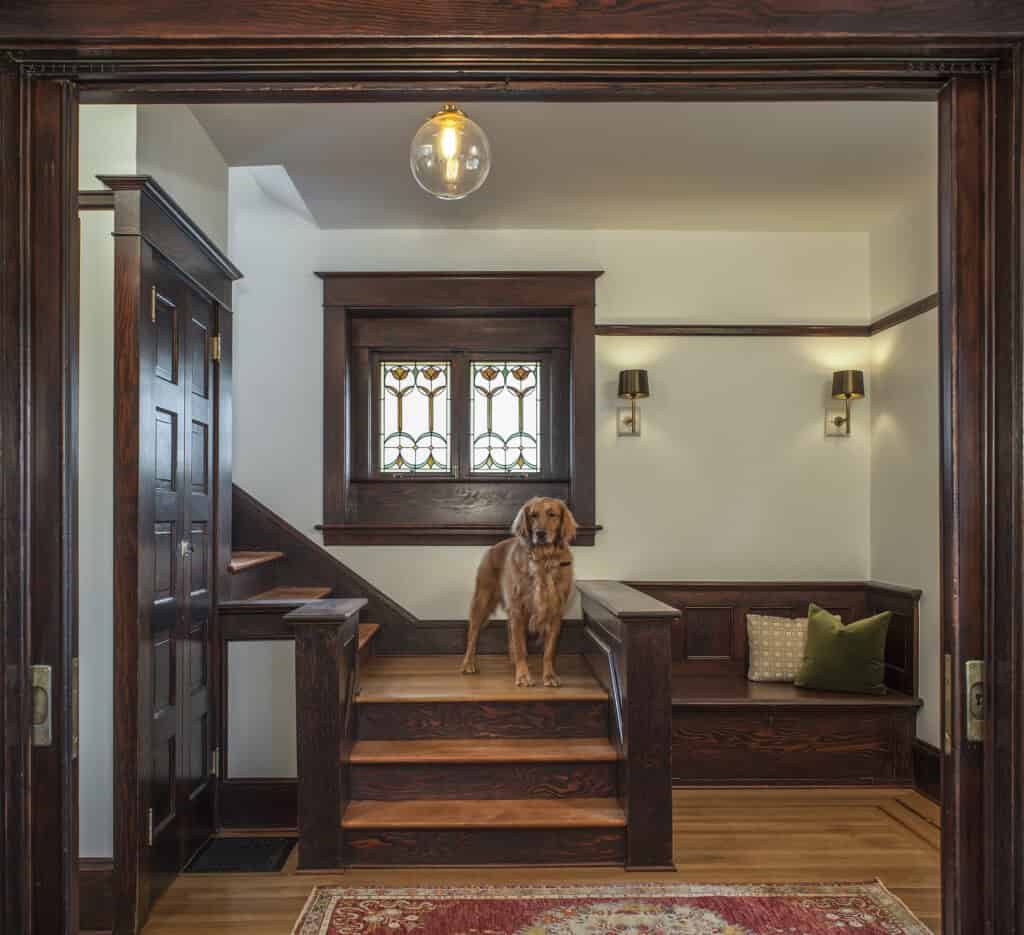
With the mature street trees, easy to follow streets, and large array of impressive house styles, walking through Irvington and Grant Park is a pleasure for the eyes. It’s an architectural lover’s dream! With stunning examples of Queen Anne, Tudor, Classic-Revival, Foursquare, Prairie-School, Craftsman, Bungalows, Cottages, and Mid-Century styles, there’s a little something for everyone in this area of Portland – and it’s one of our favorites because of that! Craftsmanship can be seen at every angle, and it’s obvious that the people who live here love these details too.
But how did a steamship captain and a US President come to having these neighborhoods named after them? Why did so many famous architects want to use these neighborhoods as the backdrop for their designs? And what connection does a famous children’s book author have to the area?
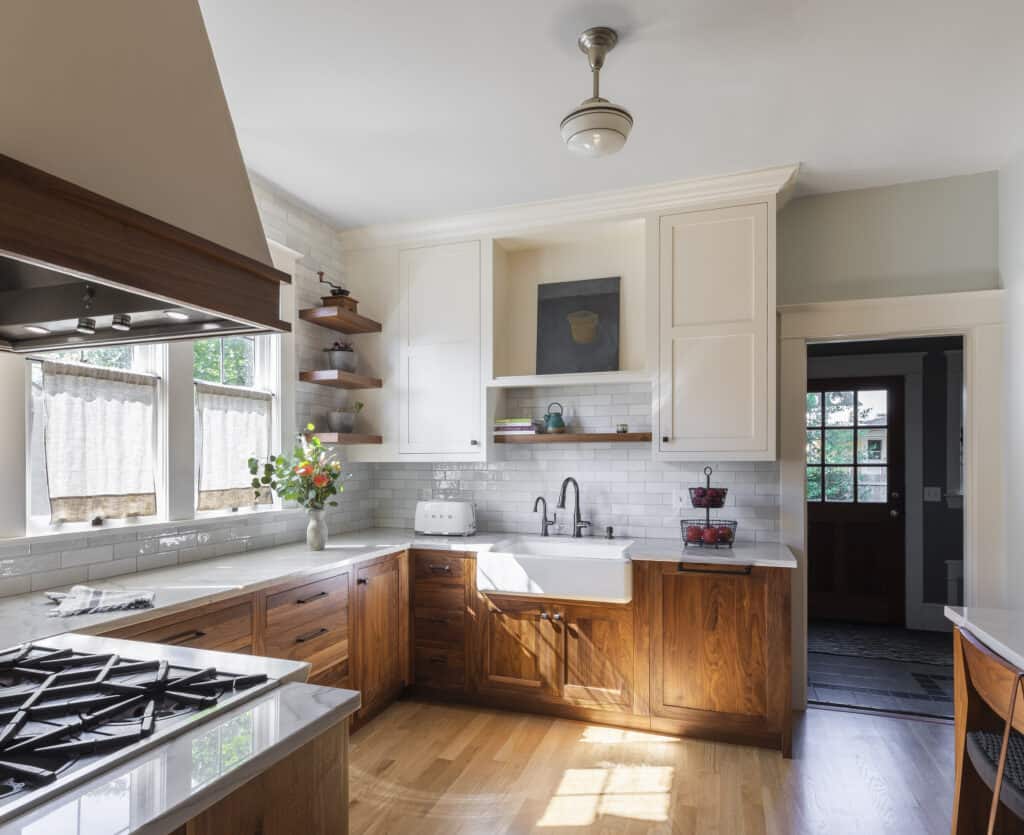
THE HISTORY
To start, we have to go way back to 1849 when the Scottish-born steamship Captain William Irving departed San Fransisco Bay to head north to Portland. Upon arrival he met, and later married, Elizabeth Dixon Irving. It is important to note that during this time there was a Donation Land Claim Act which allotted 320 acres of designated areas – free of charge – to unmarried white men, and 640 acres to married white men. These Land Claims were to help promote homesteading within the Oregon Territory (modern day Oregon, Washington, Idaho, and parts of western Wyoming). Irving and his new wife took full advantage of this Land Claim.
The Irvings did not stay long, however, as the gold rush tempted them up to New Westminster, British Columbia. By 1872, Irving died from an illness and his wife moved back down to Portland in 1882 to take advantage of the high value of land in the burgeoning city. 288 acres were sold to create what is modern day Irvington, and the final layout for the new neighborhood was filed in 1887. To protect their assets, restrictions were put in place such as “no selling of liquor or alcohol” within the confines of the neighborhood (hence why there are no bars within Irvington proper).
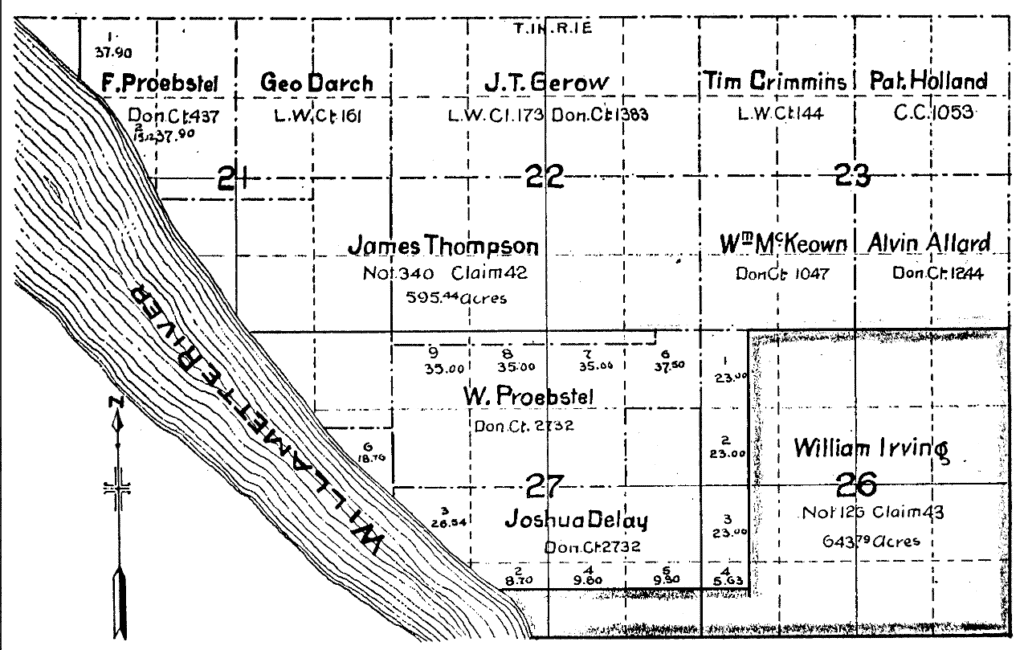
The Lewis & Clark Centennial Exposition caused a huge building boom across Portland as a whole as newcomers witnessed the many amenities of the Pacific Northwest. Between 1909 and 1910, the population of Portland doubled. Ushering in a new era for our city.
Many famed architects such as Ellis Lawrence, David L. Williams, John Bennes, and Frederick Bowman were all commissioned to build grandiose houses during this time to set apart, not only the people who would go on to live in these houses, but the neighborhood of Irvington as a whole.
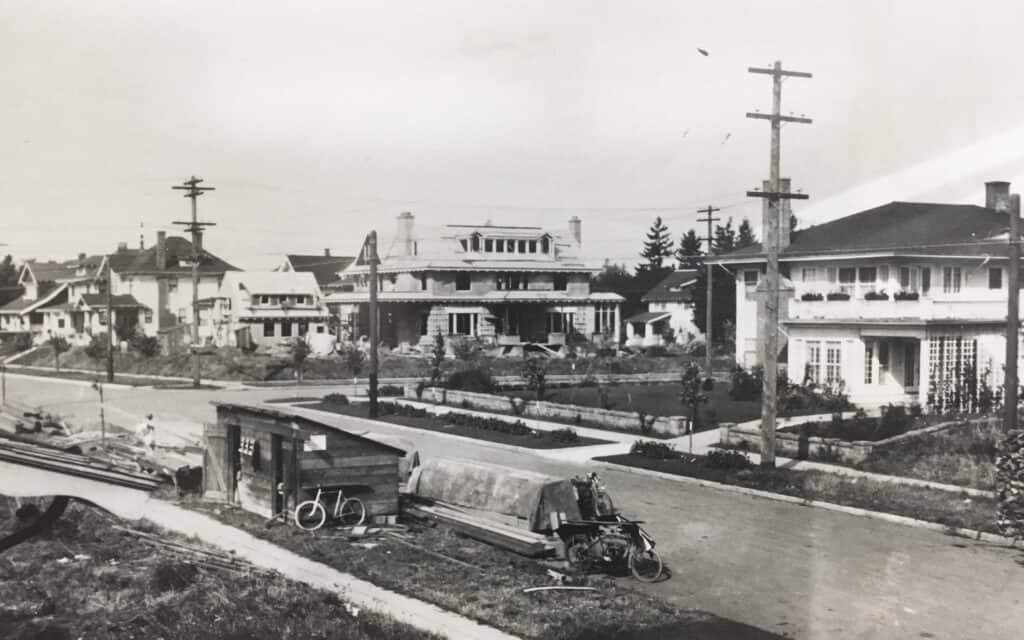
What is now known as Grant Park was partially settled in the 1850s by a different Donation Land Claim known as the Bowering Tract. It is unknown when it came into the possession of Elizabeth Irving’s business partners, but in 1887 the tract was sold off to Mr. Charles Cardinell. The plat for the neighborhood was filed in 1924 by Cardinell’s daughter, Eliza Dolph, and advertised a “beautiful wooded tract”. The area was named after US President Ulysses S. Grant (Presidential Term 1869-1877) as he had visited the Oregon Territory 3 times both before and during his presidency. This was very rare for a president to do, especially before means by railway became popularized.
President Grant was not the only famous person visiting the area, however. Beloved children’s author, Beverly Clearly (1919 – 2021) lived in Grant Park as a child area until 1934. Many of her books, including Ramona Quimby and Henry Huggins, take place in the area she grew up in.
THE PROJECTS
1910 Irvington Arts & Crafts
Untouched for several decades, this home desperately needed restoration and design updates to extend its life for the next hundred years. Lacking a real kitchen and only having one bathroom, our clients wanted to maintain as much of the original character while also updating it for modern functionality.
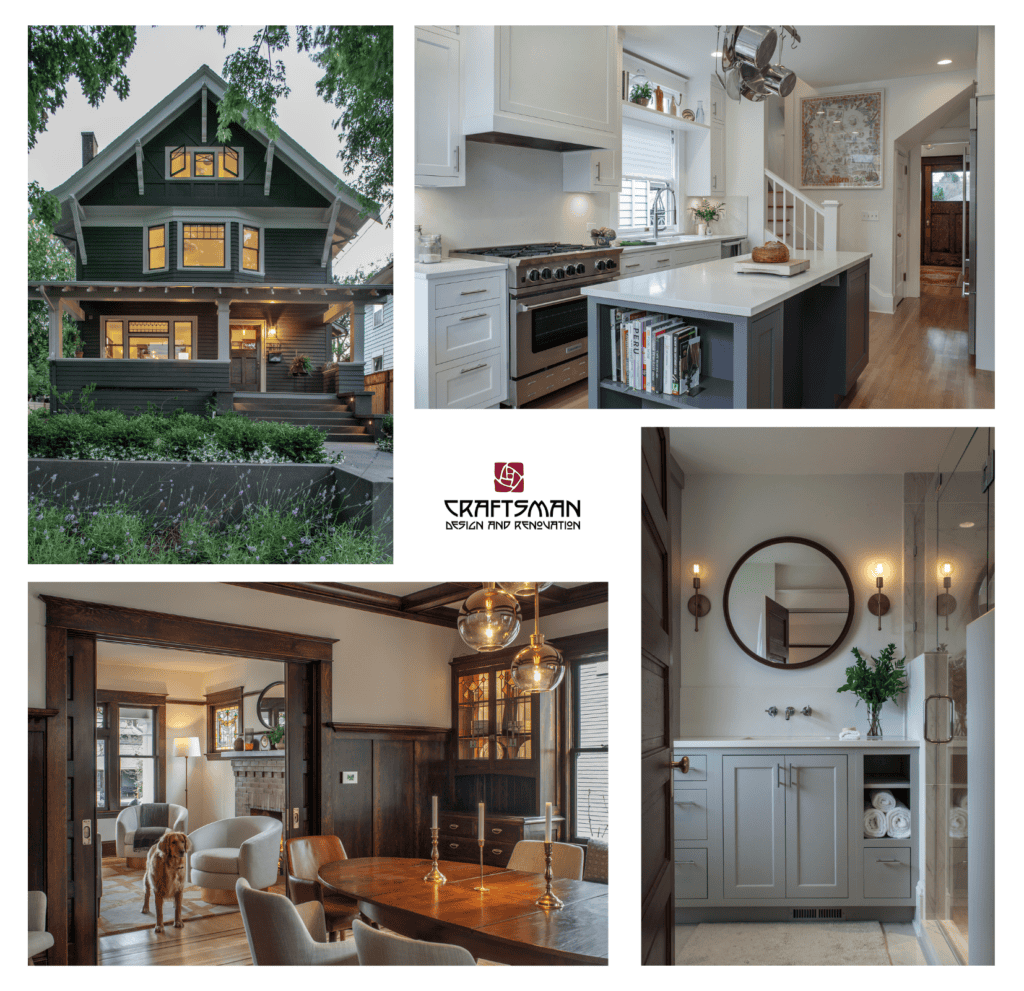
1910 Grant Park Kitchen
Our homeowners enjoyed the layout of their kitchen but needed some updates on how it functioned for them. Dropping the utility chimney and adding a larger pantry and workstation desk for them added the storage and extra workspace they desired. The two-tone cabinets help to brighten and warm the space to create an inviting place to cook!
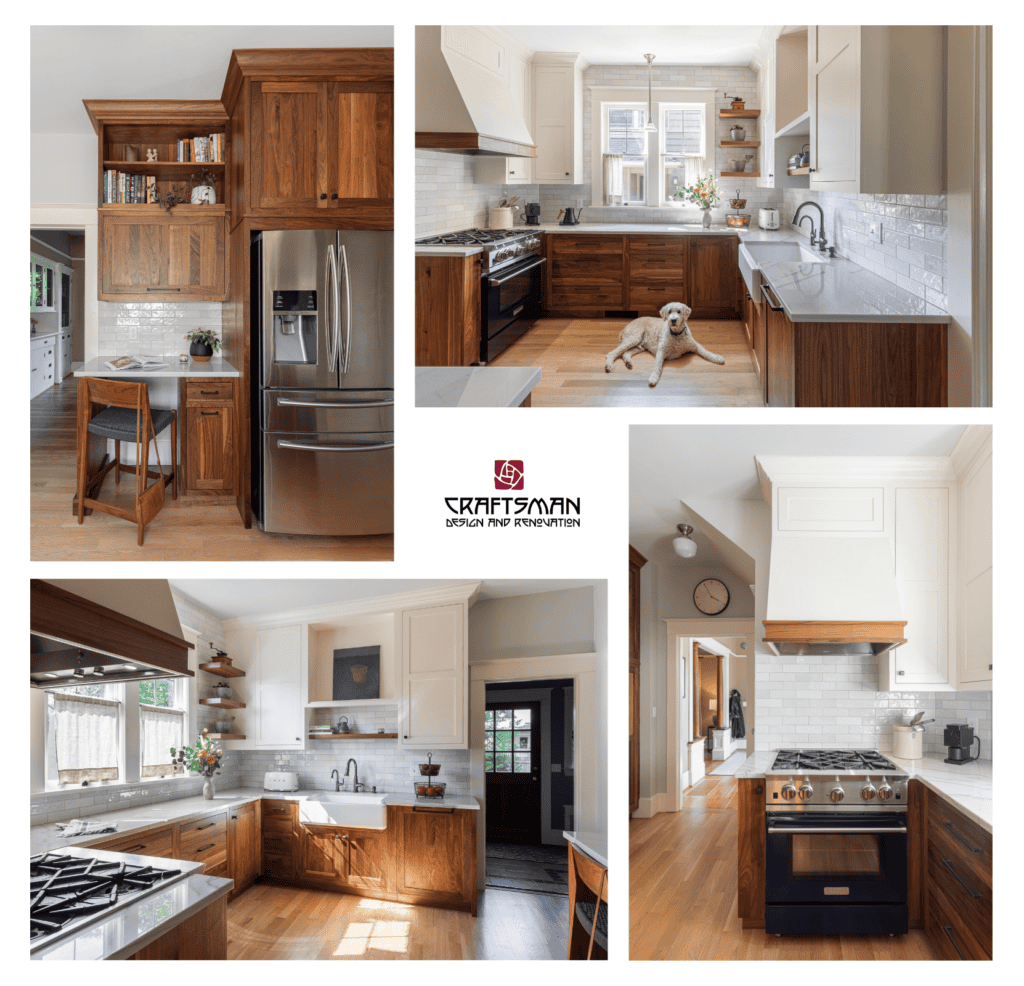
1911 Irvington Fireplace
This fireplace was reimagined from something that was just there to a statement in this living room. Updated with new fir built-ins, mantel, and local Pratt & Larson tile, it feels more a part of this home now.
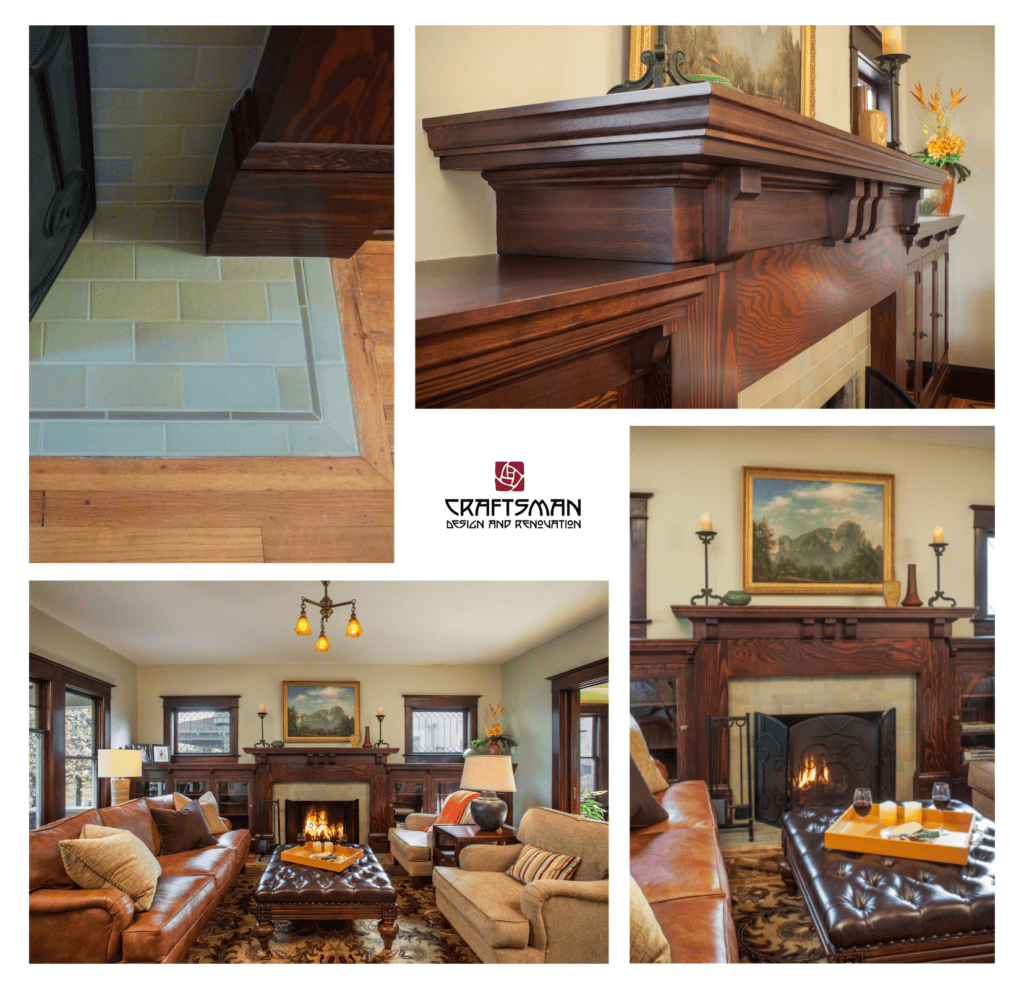
1928 Grant Park Kitchen
A dark galley kitchen that had lost its charm and a lot of functional space was begging to be updated by these busy homeowners. Maintaining the galley kitchen layout, we added new cabinets, finishes, fixtures and designed a charming furniture style storage area! Plenty of space to work now in this kitchen!

If you have an old home you would like to renovate and want local experts to help, you can reach us by filling out our online form (under Contact Us). We would love to work with you!
Historical information source: Oregon Encyclopedia & City of Portland
https://www.oregonencyclopedia.org/articles/irvington_neighborhood_portland/#
https://www.portland.gov/parks/grant-park

